How to create comfort and coziness in additional rooms: heating on the balcony and attic
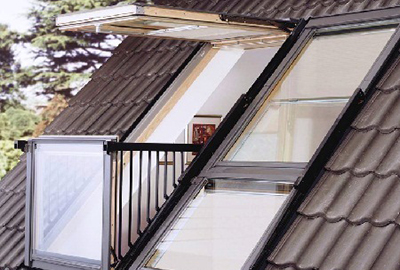
Balcony, loggia and attic – Favorite vacation spots during the warm season. But when the cold weather sets in, these useful areas become empty.
This can be easily fixed by heating the premises and making them part of the living space your apartment or house. But for the process to be successful, it is important to take into account a number of nuances.
Content
Insulation of a balcony or loggia
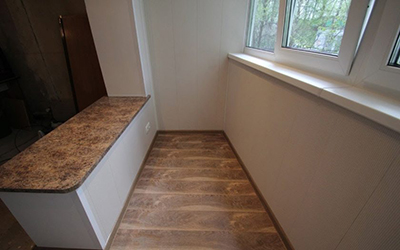
The arrangement of heating in these areas is not limited to the installation of radiators.
After all, the main source of cold is standard construction technologies, used for non-residential premises: walls without insulation, no glass, floors that are too thin, and other factors.
Therefore, before installing heating devices, take care of high-quality insulation of a balcony or atticThis is done using several methods: glazing, as well as insulation of walls, ceilings and floors.
Glazing
Exists two ways carrying out this procedure: cold and warm. The first is suitable for arranging a kind of summer recreation area and is limited only to glazing. As a result, in winter, the balcony or loggia turns into a warehouse for unnecessary things, since there is no heating there.
Warm means installing double-glazed windows and insulating the surfaces of the walls, floor and ceiling. Such a room can be made a full-fledged part of the room if it has good heating.
Advice! Glazing for heating purposes is best done with double-glazed windows with two or more chambers. Using single-chamber analogs leads to the appearance of frost inside the room, which is fraught with the development of fungus and mold.
Glazing is being done one of the following methods:
- Wooden frames – are durable, have good heat and sound insulation properties. It is better to choose swing structures for installation, since sliding elements leave room for moisture to accumulate in the off-season, which leads to icing.
- Metal-plastic systems – easy to install and durable. In terms of energy efficiency, such structures are not inferior to wooden analogues. The systems are equipped with drainage holes, which eliminates the risk of icing and moisture accumulation. Such kits serve about 40 years and more.
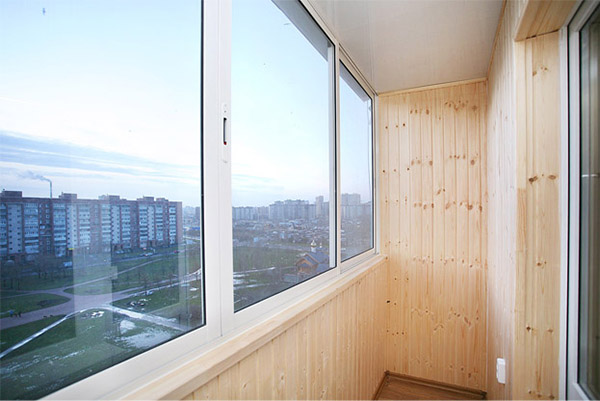
Photo 1. Balcony glazed with metal-plastic structures, which, if installed correctly, can last for decades.
- Frameless glazing – these are sliding systems that protect against noise, dust and precipitation. Tempered glass is installed on aluminum guides. Such glazing is suitable for rooms that will not be used in winter.
For independent glazing for heating purposes It is important to take accurate measurements all areas (floor, cornice, ceiling, walls, etc.), as well as install the supporting frame from timber or metal. Don't forget about canopies and a canopy that should extend beyond the glass units, ensuring effective removal of excess moisture.
Walls
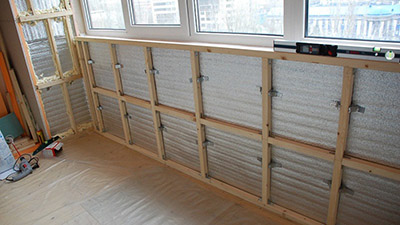
After glazing, installation work begins on other surfaces. First of all, the walls are subject to treatment.
For their insulation, mineral wool, foam plastic boards or penoplex are used.
This is a simple process of providing heating, consisting of the following stages:
- installation of lathing made of wood or metal profile;
- installation of insulation;
- gluing vapor barrier film.
Important! Lay down the selected material not too thick a layer, focusing on the area of the room being treated. This will allow you to save enough free space on the balcony or loggia.
Insulation of the attic requires increased attention, since it is important to consider the material from which the base of the room is made. If it is wood, do not forget about shrinkage.
Instead of foam plastic slabs, which are prone to deformation under pressure, experts recommend using for heating mineral wool or spray polyurethane foamThese materials are preferable for heating, as they are flexible and not prone to mold or mildew.
Ceiling

This process is carried out after the walls have been treated. First, prepare the surface, apply an antiseptic to it. Then the insulation is installed.
For ceilings, for the purpose of heating the room, they use penofol, fixing it with wood glue, mounting foam or simple self-tapping screws.
Only after the insulation has been applied is it installed lathingFor the ceiling, it is more convenient to use a light metal profile, but a wooden analogue will also work.
Floor
This is a complex process that requires attention to detail. It is appropriate to use as insulation mineral wool, expanded clay, polystyrene foam, penoplex or penofol. But the specifics of installation work have their own nuances and is carried out in strict sequence:
- cleaning the surface to be treated from dust and debris;
- laying waterproofing directly onto the concrete floor;
- installation of wooden logs, carried out strictly in one horizontal plane, which should be controlled by level;
- installation of insulation in the spaces between the joists;
- covering the surface with a vapor barrier film;
- subfloor organization.
Attention! In attics, floors usually do not require additional treatment, as they are already prepared.
Insulation is preparatory process, which guarantees the thermal insulation of the room. Without it, heating cannot be organized. Thus, having installed radiators on an unprepared balcony, you will only spend money on heating the street without achieving the desired warmth in the room.
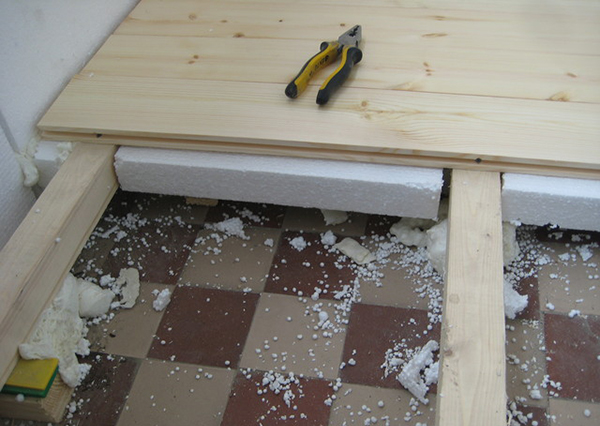
Photo 2. Insulation of the floor on the balcony using polystyrene foam and mounting foam on a small ceramic tile.
Methods of heating a balcony and loggia
Exists several ways of heating on these housing sites:
- connection to central heating;
- heated floors;
- heater installation (infrared, electric or oil).
Each installation method has its own specifics, pros and cons.
Central heating
This is the most troublesome way to heat a balcony or loggia. The main problem is obtaining permission from the BTIWithout this document, all work is considered illegal.
Attention! Easy connection of a balcony to central heating forbidden, since the neighbors below will receive less heat. Therefore, it is important that the project attached to the application assumes the annexation of previously non-residential territory to the room, i.e. the balcony receives the official status of living space.
Having received permission, they begin installing the battery.

Photo 3. A heating battery on a balcony is installed only with permission and at your own risk.
This process consists of the following steps:
- clarification of the date of work in your heating company, since installation requires a specialist to visit to shut off the riser and then start it up;
- preliminary preparation of the wall, which will have a battery that includes foil gluing for additional energy efficiency;
- creating holes in the wall to allow pipes to exit;
- installation of brackets to fix the battery to the wall (2 on top and 1 on the bottom);
- installation of pipes and batteries, installation of a tee with a valve to regulate the heat supply;
- checking all connections;
- test run of the heating system, which involves eliminating air locks.
Important! By connecting an additional battery to the central heating, you take full responsibility for the operation of the entire structure. Any emergency situation (a burst pipe in the apartment, a drop in pressure in the neighbors below, etc.) will result in equipment repairs at your expense.
Warm floor
This type of heating is attractive in financial and aesthetic terms. The heated air rises, providing the desired heat. For the arrangement of balconies and loggias, it is used water or electrical equipmentThe specifics of installation depend on the selected system.
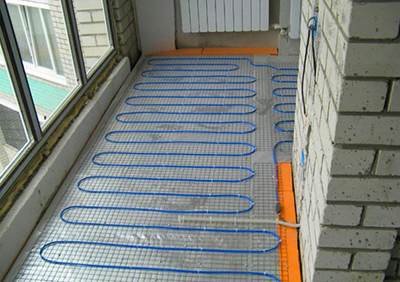
Water heated floor – the most labor-intensive option. This is due to the fact that in addition to the screed itself, it is important to ensure high-quality insulation of the surface being treated – as a result, the total thickness of the floors will be 10-20 cm.
The heating system itself is connected to the water supply, therefore expenses for utilities will increase.
But this is still the most budget heating option, which does not require colossal costs both during installation and in further maintenance. The heat carrier ensures uniform heating of the air and has the lowest heat loss.
Installation of water heated floors on the balcony is carried out as follows:
- creation and leveling of rough concrete screed, carried out immediately after insulation;
- laying a special insulating film, necessary to direct heat upward;
- pipe installation, through which water will circulate;
- connection to hot water supply or to a boiler;
- laying concrete screed on the system;
- installation of floor coverings (preferably tiles).
Attention! The pipes for circulation of the coolant are laid in a serpentine pattern and should not touch each other or the walls. The minimum permissible distance between them is depends on the selected equipment and is usually specified in the installation instructions.
Electric heated floor stands out for its simpler installation. At the same time, there is the possibility of choosing from two types of systems: cable or film.
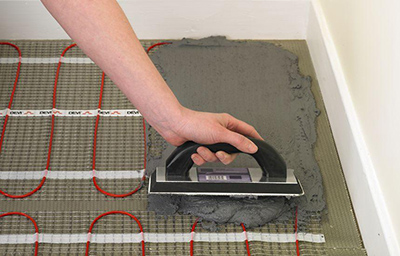
Among the advantages of electrical equipment it is worth highlighting uniformity of heating. But the heating system cools down relatively quickly and requires constant work, which affects utility bills.
Electric floors contribute a number of restrictions on furniture arrangement and the type of flooring. Therefore, the placement of all interior items is thought out in advance.
Installation of electric underfloor heating is simpler:
- application of an insulating coating to the insulation;
- installation of a cable or film system using a snake-like method;
- floor screed (for cable equipment);
- installation of floor coverings (tiles or ceramics).
Attention! Cable floors are placed in the screed! If you want to simplify the process, choose film systems that are installed directly under the decorative coating.
Warm floors are different highly efficient but require effort during installation. More accessible and simple heating devices are heaters.
Infrared heater
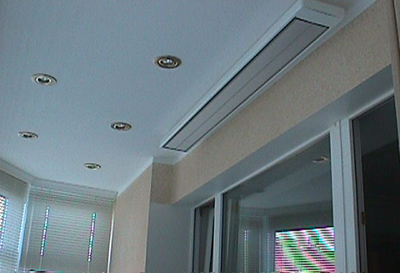
This equipment can be stationary or portable. Heating of surfaces is carried out by means of heat transfer from a quartz lamp, which creates long-wave infrared radiationThe rays are in a safe spectrum.
The main advantages of such a heating device are: high heating speed, low cost And low energy consumption. But infrared heaters also have flaw – they do not heat the air, but the objects they are aimed at. That is, if the device is directed away from you, you will not feel the heat.
Electrical appliance
Heat generation is done by heating under the influence of current. Such equipment does not require complex installation – just buy it, place it indoors and plug it into an outlet.
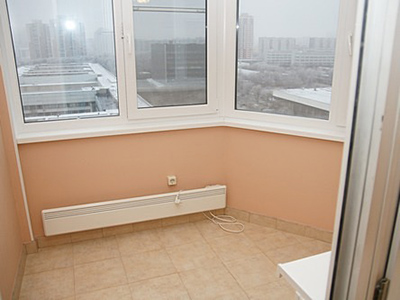
Exists several types of devices, which have different operating principles:
- Fan heaters – the air in the device is heated by a spiral and supplied under pressure created by a built-in fan.
- Convectors - cold air comes from the bottom of the device, heats up and, under the action of the laws of physics, rises, exiting through the grate. This is a kind of analogue of central heating, only without water.
- Electric fireplace – the heating coils are hidden inside the device, and heat circulation occurs naturally.
Among advantages Electric heaters are distinguished by their availability, ease of use, the possibility of floor or wall placement and high speed of heating the room. But they also have significant shortcomings: rapid cooling after switching off and increased energy consumption, so it is better not to use them for heating.
Oil heaters
This is a unique combination of the efficiency of electric current with a good heat carrier. Inside the metal case is mineral oil heating coilIt retains heat and takes a long time to cool down, which allows energy resources to be used periodically rather than constantly.
The main ones advantages Such equipment is considered to be low cost, safe, and energy efficient.

Photo 4. An oil heater installed on the balcony is a good energy source that can retain heat for a long time.
Among disadvantages They are distinguished by their large dimensions and low air heating rate.
All types of heaters It's better to turn it on periodically and use as a supplement to the main heating. Therefore, when arranging balconies and loggias, experts recommend combining heated floors with auxiliary devices. This way, you will be able to control utility rates, achieving optimal energy efficiency.
Heating the attic
This room is a full-fledged part of the house, which can easily be can be adapted for permanent residence. Therefore, after insulating the walls and ceiling, a heating system for the attic floor is created. The organization of heat supply is carried out in several ways:
- connection to the general heating system;
- installation of additional electrical appliances;
- fireplace installation;
- connection of an autonomous boiler;
- creation of a warm floor.
Each method has a number of features and nuances.
Connection to the heating system of the lower floor
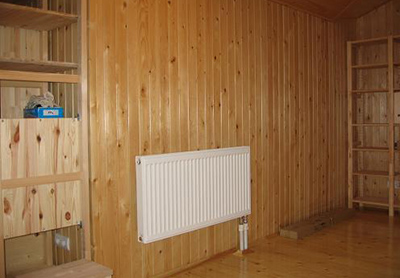
This most effective method of organizing the heating of the room. But a simple connection to the general system is not enough.
Preliminary consideration current equipment status (boiler and pump), its capacity and characteristics. If the equipment is designed to heat only one floor, it is replaced with a more powerful one.
Having decided on the design aspects, they make up battery placement project and purchase everything necessary, including the radiators themselves, pipes (air ducts) and components. The process of installing an addition to the system is standard and requires a temporary shutdown of the heating followed by a test run.
Electrical appliances for heating the attic floor
Similar devices for heating are not always appropriate. Before using them, it is important to calculate the permissible loads on your electrical network, so that there are no failures and unexpected "surprises" in the form of tripped circuit breakers or burnt cables.
Attention! One electrical appliance not enough for full heating attics. Therefore, all calculations should be carried out taking into account the required amount of additional equipment and its capacity.
To heat the attic, convectors, air conditioners with a heating function, IR and oil heaters are used.
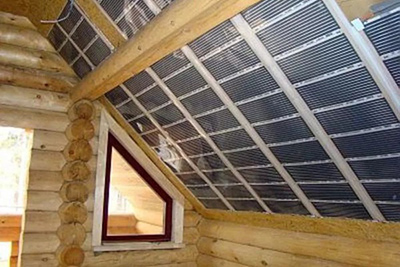
Electrical equipment has 2 installation methods:
- stationary wall-mounted;
- mobile floor.
Among advantages Such heating devices are worth highlighting for their affordable cost and high heating speed. But are such devices so effective?
In fact, no. After all, they promise significant increase in utility costs, cool down quite quickly and often do not cope with heating in full. Therefore, they are used as a supplement to the main heating.
Installing a fireplace
This piece of furniture is a symbol of comfort and well-being. But its installation on the attic floor is different increased complexity, which is associated with such nuances:
- Weight of equipment and loaded fuel – can be solved by strengthening the floor or by choosing lightweight electric fireplaces.
- Creating sufficient thrust – it is optimal that the exhaust pipe be not less than 5 m, which is problematic for the attic. Therefore, the fireplace is installed under the highest point of the room.
- Complex technical implementation of the plan – installation is painstaking and requires precise calculations.
Advice! For heating attic spaces, lightweight fireplaces of a fairly large size are chosen.
To organize heating of the attic using a fireplace, the following range of works is carried out:
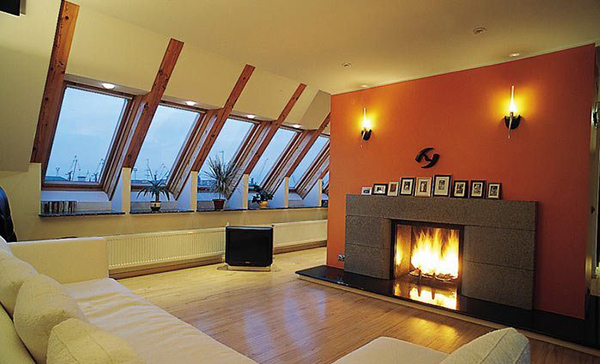
Photo 5. A fireplace in the attic serves not only as a source of heat, but also as a decoration for the room.
- Preparation heating project;
- purchase batteries, pipes and air ducts;
- floor preparation (strengthening);
- Creation foundation under the fireplace;
- thermal insulation walls;
- laying the foundation hearth;
- organization thermal insulation of walls the fireplace itself;
- construction pedestal and apron made of brick;
- installation fireboxes;
- Creation chimney;
- installation air casing;
- finish finishing;
- connection heating devices;
- test launch and check traction.
To make the work easier and reduce the load on the floor, limit yourself electric fireplaceIt does not require gas removal and is capable of heating the room.
Among advantages fireplaces for heating are distinguished by aesthetic beauty, economy and high efficiency. But the installation of such equipment is characterized by increased complexity and requires attention to detail. The slightest mistake when installing a pipe for removing exhaust air will lead to the appearance of soot and the entry of gases into the roomTherefore, it is better to involve professionals in construction and installation works.
Autonomous boiler
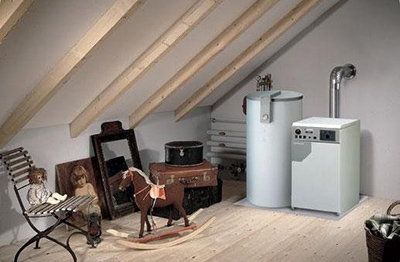
In cases where the main heating system cannot handle additional loads, it is recommended installation of individual boiler for the attic.
For this purpose, a separate project is drawn up and the necessary equipment is purchased: pipelines, a pump, the boiler itself, batteries, components, etc.
When choosing boiler focus on the type of fuel used. Your heating costs and the location of the device depend on this parameter. Thus, solid fuel boilers can only be installed on the lower floors. The method of circulation of the coolant is also important. It is optimal to use a pump, since the supply of heat to the attic requires high pressure in the system.
The installation includes the following stages:
- boiler room preparation, including floor leveling (if necessary);
- installation of heating devices;
- connection of the boiler itself (depending on its type);
- connection of all elements of the system;
- test run of equipment.
Reference! If you want the installation work on heating to be as simple as possible, choose an electric boiler. Its installation does not require complex preparation. But do not forget about the maximum permissible loads on the electrical network. It is quite possible that you will have to obtain permission from the energy company that services you.
Among advantages autonomous boilers for heating the attic should be highlighted for their savings on utility bills and high heating efficiency. The only drawback This solution involves large initial costs, as well as some organizational difficulties.
Warm floor
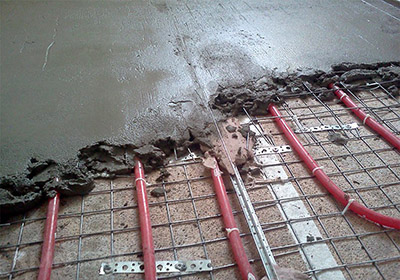
This is one of the simple and affordable methods of creating a full-fledged heating of the attic floor. When arranging the attic, choose one of three systems:
- water or hydraulic;
- electric;
- infrared.
Among advantages Warm floors are distinguished by energy efficiency, safety, ease of installation, uniform air heating, and control over energy consumption.
Disadvantage The introduction of some restrictions on the use of floor coverings and an increase in utility bills is considered to be a problem with such heating equipment.
Useful video
From the video you can learn how to insulate a balcony or loggia using polystyrene foam and mounting foam.
Wide choice
Exists there are a lot of available methods organization of heating on a balcony, loggia or attic. Which one to choose? All depends on the size of the room, your wishes and goals. Each type has its own pros and cons, features. Based on the acceptable methods, you can choose the appropriate option.









Comments